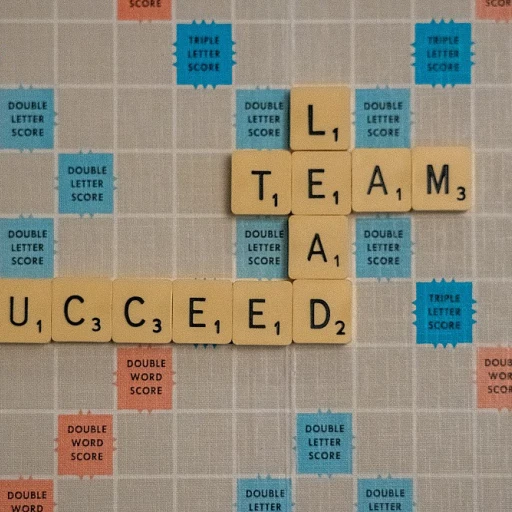Understanding Iris ID Time Clock Systems
An In-Depth Look at Iris ID Time Clock Systems
The modern workplace is constantly evolving, and with it, the methods of tracking employee attendance. Iris ID Time Clock Systems are emerging as a popular choice for businesses aiming to enhance their workforce management solutions. This sophisticated technology leverages iris recognition to offer unparalleled accuracy and security in time and attendance monitoring.
At the core of this technology is the iris, a unique physiological marker that remains consistent throughout a person's life. This makes iris recognition a reliable method for confirming identities and prevents issues such as buddy punching, where one employee clocks in on behalf of another. The result is a more accurate reflection of employee attendance data, minimizing errors seen with traditional systems like card readers or simple time clocks.
Iris ID devices, especially the ICAM series, utilize advanced recognition technology that captures the intricate patterns in an individual's iris. Employees simply look into the device's iris camera, and the system registers their time in and out. This process not only streamlines time tracking but also integrates seamlessly with other biometric tools in your HR department.
The introduction of Iris ID Time Clock Systems also brings a new level of device management to businesses. These systems can work in tandem with existing technology, such as open android platforms and REST APIs, to provide a comprehensive solution. They offer a significant upgrade in data management capabilities, ensuring that all attendance records are secure and accessible.
As organizations look towards the future of employee time management, the choice of technology plays a crucial role. Understanding the inner workings of this system will aid businesses in making informed decisions and ultimately lead to a more efficient, secure, and trustworthy attendance management system.
Benefits of Biometric Time Clocks in HR Analytics
Advantages of Biometric Identification in Workforce Supervision
In the business landscape, biometric time clocks have emerged as powerful tools in workforce management. By employing advanced iris recognition technology, these systems offer significant benefits over traditional attendance methods. One of the key advantages lies in enhanced accuracy and reliability.- Accuracy in Time Attendance: Unlike conventional card readers, biometric systems such as Iris ID iCAM series and IrisTime ensure precise tracking of employee attendance. With no room for errors related to lost or stolen cards, businesses can alleviate concerns associated with buddy punching.
- Boosting Accountability: Time clock devices equipped with recognition technology foster a sense of accountability among employees. Workers are more likely to adhere to schedules when they know attendance is tracked with high precision through iris and face recognition.
- Seamless Management: These systems simplify device management by leveraging open Android platforms and REST API functionalities. The ability to integrate seamlessly into current HR systems streamlines administrative tasks and minimizes manual efforts.
- Superior Workforce Management: Utilizing biometric clocks promotes efficient business solutions by allowing HR departments to access comprehensive data on employee time and attendance. Understanding patterns and irregularities through these insights can drive informed decision-making.
Challenges and Considerations
Overcoming Limitations and Strategizing Effectively
Employing Iris ID Time Clock Systems in workforce management can offer robust and reliable solutions. However, it is important to consider the challenges and limitations that come with their implementation. One prominent issue is the upfront cost associated with biometric technology. Devices like the iCAM series are sophisticated, involving complex iris recognition technology, which can be expensive. Businesses need to evaluate the long-term benefits versus initial expenditures to determine feasibility. Despite the effectiveness of these systems in eliminating buddy punching and improving employee time attendance accuracy, challenges such as privacy concerns and staff apprehensions over face and iris recognition should be addressed. Ensuring transparent communication with employees about the purpose and security measures in place can help ease these worries. Furthermore, integration with existing systems such as HR analytics tools can be another hurdle. Legacy systems might not natively support biometric devices, requiring custom solutions. Leveraging open Android and REST API capabilities can facilitate smoother integration, averting potential system incompatibilities. There is also a need for regular updates and maintenance of time clocks and devices to keep the biometric and recognition technology in optimal condition. Regular training and support for both IT staff and employees are critical to avoid operational disruptions. In conclusion, while iris time and face recognition technology offer significant advantages for workforce management, addressing these challenges effectively paves the way for successful implementation. This comprehensive understanding ensures that your business can harness the full potential of biometric time clocks in modern HR practices. For additional insights on maximizing HR analytics with technology, consider exploring data-driven decision-making.Case Studies: Successful Implementation
Real-world Examples of Iris ID Time Clock Success
Implementing Iris ID time clock systems has proven successful for various businesses that have prioritized accurate employee attendance and seamless workforce management. Let's explore how different organizations have leveraged iris recognition technology to address common challenges and enhance operational efficiency. One notable case involves a large manufacturing company that faced issues with traditional card reader systems. Employees sometimes engaged in 'buddy punching,' where an employee swipes a card for a colleague. By incorporating biometric time clocks with iris and face recognition, the company effectively eliminated this loophole. This not only ensured accurate attendance records but also improved employee accountability. In the healthcare sector, where access control and precise time tracking are critical, the adoption of ICAM series biometric devices has made a significant impact. These institutions have benefited from the contactless nature of iris face recognition, particularly important in environments where hygiene is a priority. Integrated with robust employee time management systems, these devices provided a seamless solution for tracking attendance and managing shifts without any physical contact. Many organizations have chosen to integrate the Iris ID systems with open Android and REST API solutions, allowing for flexible device management and enhanced customization. This integration capability has proven essential for businesses looking to tailor the system to their specific workforce management needs. Finally, a prominent tech company adopted these biometric time solutions to streamline its global operations. By using biometric recognition for time attendance, they were able to synchronize employee data across various locations. The unified system offered real-time insights into workforce patterns, facilitating better management decisions. These examples highlight the transformative potential of biometric time clocks when implemented thoughtfully within a business’s operational framework. Whether reducing payroll discrepancies or improving access control, the application of iris recognition technology is paving the way for more secure and efficient workforce management practices.Integrating Iris ID Time Clocks with HR Analytics Tools
Seamless Connectivity for Enhanced Workforce Management
Integrating Iris ID Time Clock Systems into your existing HR analytics tools can significantly streamline your workforce management processes. Utilizing technologies like iris recognition and face recognition allows for flawless employee time tracking and attendance management, eliminating the hassle of manual data inputs. By combining biometric time clocks with open Android solutions and REST API capabilities, businesses can ensure seamless device management and data flow. These integrations enable real-time access control and effective time attendance monitoring through advanced card reader and biometric technologies. Here are some considerations for successful integration:- API Compatibility: Ensure that your chosen HR analytics platform supports REST API integration. This allows for seamless data exchange between your time clock systems and your HR management software.
- Device Management Protocols: Implement device management practices that accommodate for various time clock devices, including iCAM series and other recognition technology.
- Data Security Concerns: Incorporate stringent data security measures to protect sensitive employee information, especially when utilizing biometric solutions like iris and face recognition.
- Training and Support: Provide adequate training to your HR team and employees to efficiently use the new time clock systems. Support from providers can help address initial setup and troubleshooting issues.








